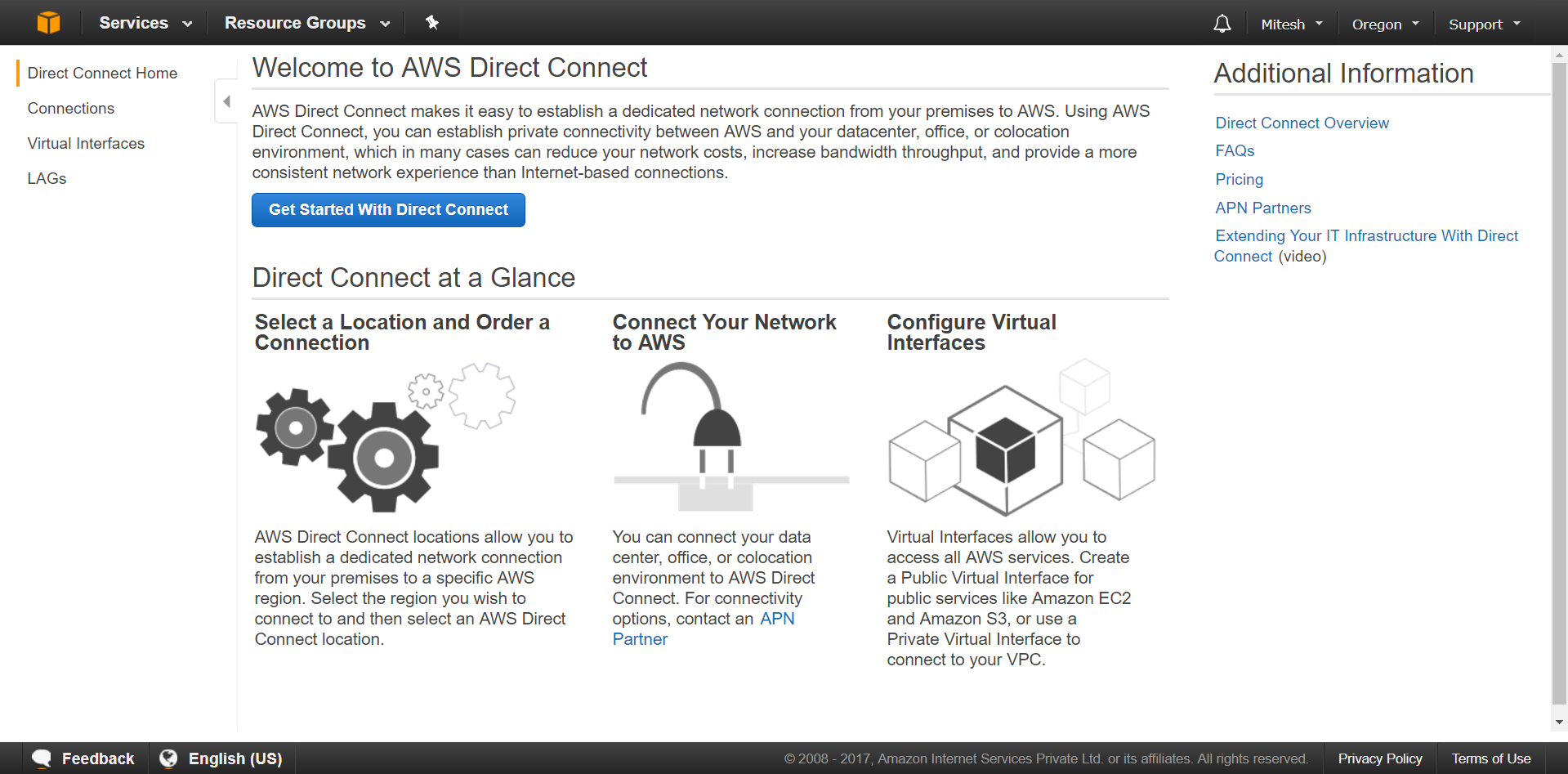Overview of networking services
In this section, we will have an overview of networking services and then we will cover them in detail in the coming chapters.

Let's start with Amazon Virtual Private Cloud.
Amazon Virtual Private Cloud
Amazon Virtual Private Cloud (Amazon VPC) is more secure because it allows you to create instances in a logically isolated virtual network.
The following screenshot shows few components that are important in the Amazon VPC:

AWS Account supports EC2 instances in VPC only. Now the question can be, do you need to create a VPC the moment you create your account?
The answer is no. Default VPC is available in the Amazon VPC. If you delete default VPC, then you cannot restore it. You need to contact AWS Support.

References: http://docs.aws.amazon.com/AmazonVPC/latest/UserGuide/default-vpc.html
Default VPC contains the following:
- VPC with a size
/16IPv4 CIDR block (172.31.0.0/16); it means 65,536 private IPv4 addresses. For more details on CIDR, visit: https://en.wikipedia.org/wiki/Classless_Inter-Domain_Routing. - Default subnet
/20in each Availability Zone; it means 4,096 addresses per subnet. - One internet gateway.
- A main route table for default VPC.
- Default security group and associate it with your default VPC.
- Default network access control list (ACL).

- Click on
Your VPCsin theVPC Dashboard - Verify the
VPC ID,State,IPv4 CIDR,Route table,Network ACL,and so on

The subnet can be defined as a section of a VPC's IP address range where you can place groups of isolated compute resources.
Note
Each subnet in default VPC has 4091 addresses available, and each subnet is created in the different Availability Zones.
- Click on
Subneton the left sidebar inVPC Dashboard. Below Subnets, we haveRoute tables, Internet Gateways, NAT Gateways,andElastic IP addresses
Route Tableshelp us define subnets that need to be routed to theInternet Gateway, the virtual private gateway, or other instances.Internet Gatewayallows connection to the public internet from Amazon VPC.NAT Gatewayrepresents a highly available and managed Network Address Translation (NAT) service for resources in a private subnet to access the internet. NAT gateway is created in public subnet.- An
Elastic IP addressis a public static IPv4 address, so you can access the resource. If elastic IP address is not allocated with a running instance, then hourly charge has to be paid by the user.
In the next section, we will discuss Amazon CloudFront.
Amazon CloudFront
Amazon CloudFront is a CDN, a content delivery network service. It helps speedy content delivery to the user with the use of edge locations established by AWS.
Go to AWS Management Console | Services | Networking & Content Delivery | CloudFront:

The following sequence takes place when the user requests static or dynamic content:
- If the content is available in the edge location nearby the user, CloudFront delivers the content immediately
- If the content is not available in the edge location nearby the user, CloudFront requests content from the source, such as Amazon S3 bucket or an HTTP server, and deliver to the user
In the next section, we will discuss Amazon Route 53.
Amazon Route 53
Amazon Route 53 is a domain name or DNS service. It is a reliable and scalable service that has DNS servers distributed globally. It scales automatically to manage the spike in the DNS queries so services are robust.
Let's note down what services it provides to a user. The following things can be achieved using Amazon Route 53:
- Highly available domain name system
- Domain name registration
- Health checks
- Scalable domain name system
Go to AWS Management Console | Services | Networking & Content Delivery | Route 53:

In the next section, we will cover AWS Direct Connect in brief.
AWS Direct Connect
Can we connect to AWS from internal network of an organization without accessing the internet? The answer is yes!
It's quite simple! Connect the internal network to the AWS Direct Connect location using standard 1 Gigabit or 10 Gigabit Ethernet fiber-optic cable. Once this is achieved, you can create virtual interfaces to AWS services.
Go to AWS Management Console | Services | Networking & Content Delivery | Direct Connect:

In the next section, we will cover Elastic Load Balancing in brief.
Elastic Load Balancing
Elastic Load Balancing/Elastic Load Balancers (ELB) can be used to distribute traffic to multiple targets. ELB can be configured on Amazon VPC and Amazon Elastic Beanstalk. It distributes traffic to only healthy targets.
There are two types of load balancers that are supported by Elastic Load Balancing:
- Application Load Balancers
- Classic Load Balancers

Go to AWS Management Console | Services | EC2 | EC2 Dashboard | Load Balancing | Load Balancers:

In the next section, we will cover Auto Scaling in brief.
Auto Scaling
Auto scaling creates a scenario where you have an appropriate number of instances or targets to serve the traffic load based on certain conditions. Based on configured Auto Scaling policies, instances are increased and decreased on demand.
Go to AWS Management Console | Services | EC2 | EC2 Dashboard | Auto Scaling | Launch Configurations or Auto Scaling Groups:

In the next section, we will cover AWS Billing Dashboard.




































































